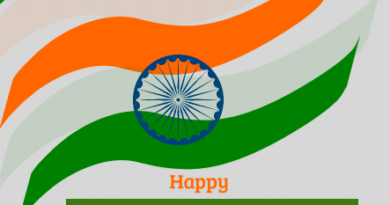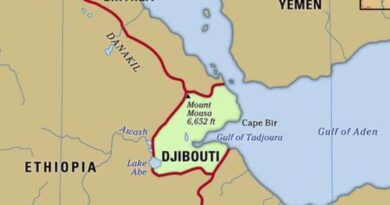Namibia Independence Day 2020: Journey of freedom struggle
This year Namibia will mark its 30th Independence Day, formally becoming independent on 21 March 1990. Sam Nujoma was the Namibia’s first president to take the oath. Legendary democratic South African leader Nelson Mandela and delegates from 147 countries attended the sworn ceremony. The South African flag was lowered on 21 March 1990 and Namibia was raised at the National Stadium; Namibia later joined the Commonwealth, the UN and the African Unity Organization. It took 24 years for Namibia to become independent from South Africa. Between 20 000 and 25 000 people died during the 1966 – 1990 years of protest and war. Namibia’s history passed several distinct stages from colonization in the late nineteenth century to Namibia’s independence on March 21, 1990.
Colonialism history of Namibia
Namibia in late 18th Century was known as German South West Africa , From 1884 to 1919, Namibia was a colony of the German Empire. It all started with the establishment of German Rhenish Missionary Society in 1840 . The Rhenish missionaries had a significant impact on South West Africa’s history, clothing and politics. As the region was rich in gold, copper, platinum, diamonds and other minerals,German people wanted to make it their major investment hub. In South West Africa the German flag was eventually raised on 7 August 1884 and by the help of German banks, factories and politicians the German Colonial Society for Southwest Africa, known as DKGSWA, was founded in 1885. Monopoly rights to exploit mineral deposits have been given to DKGSWA.
End of German rule in South West Africa
Between 1884 to 1915, Germany controlled South-West Africa. Alone in the African colonies of Germany, it attracted thousands of colonists who took land from local people. The Herero and Nama mounted the biggest and last uprising against the Germans between 1904 and 1908. The genocide of Herero and Nama was the first genocide of the 20th century against Ovaherero, Nama and San in German South-West Africa by the German Empire. This took place from 1904 to 1908. The genocide has killed between 24,000 and 100,000 Hereros, 10,000 Nama and the uncertain number of San.
Namibia has never been completely controlled by the German Colonial Administration. Between 1890 until 1908, the pre colonial population of Namibia experienced various wars and rebellions against Germans. The First World War, after the assassination of Sarajevo, led to a war between Germany and the British Empire, both in South Africa and in Europe. In 1915 Germany lost the government of Namibia to Prime Minister Louis Botha of South Africa after a severe defeat against the Union troops of South Africa.
In the cultural, physical environment of Namibia, German settlers left a deep and enduring impact. About 20 000 ethnic German reside in Namibia, a century after the establishment of the German colony.
Beginning of South African rule over Namibia and Independence Struggle
In 1915 following the defeat of the German army during the first world war, South Africa took over the colony and administered it as a League of Nations mandate zone from 1919 onwards. Following the dissolution of the League by the United Nations in 1946, South Africa declined to give up its former mandate, replacing it with an United Nations agreement requiring a tighter international control of the administration of its territories. The Council of the Herero Chief sent a number of requests to the UN asking for independence to be granted to Namibia in the 1950s. In the 1960s, with the exception of Namibia, most countries in Africa achieved independence.
Minerals such as uranium, vanadium, lithium, tungsten and diamonds were also rich in the region. Such mineral resources influenced and inspired South Africa to try to stick to Namibia during the many years of the 1966–1990 revolution.Another motive of South Africa was by holding Namibia Angola’s guerrilla war will be further kept away from South Africa. In 1966 the International Court of Justice rejected the Ethiopia and Liberia petition against the continued presence of South Africa, but the United Nations subsequently abolished South Africa’s mandate and in 1971 released the’ advisory opinion’ calling the continued administration of South Africa unconstitutional.
In reaction to a decision by the International Court of Justice in 1966 ,SWAPO (People’s Liberation Army of Namibia), a rebel group began an armed struggle for independence, but only in 1988 South Africa decided to end its invasion of Namibia, in compliance with United Nations peace agreement for the entire region and finally Namibia officially became independent on 21 March 1990.
Interesting Facts about Namibia
- Namibia is home to the oldest desert in the world. Namibia Desert is over 55 million years old, scientists estimate. The Namibia is named after the Namib Desert.
- The desert of Namibia is very wide, covering 2000 km along Namibia, South Africa and Angola’s Atlantic coasts.
- The desert of Namibia has the world’s highest sand dunes of up to 383 meters. Sossusvlei Sand Dunes is one of the most impressive sights in Namibia.
- In ancient times in central Namibia, the Gibeon meteorite shower took place. It covered a 275 km elliptical area. Remains of this meteorite shower are displayed in Windhoek, the capital of Namibia.
- Namibia’s Skeleton Coast is the largest burial site for sailors and ships in the world.
- Namibia is the second most densely populated country in the world after Mongolia.
Independence Day Celebrations in Namibia 2020
The key event this year will be held at Windhoek’s Independence Stadium in Olympia. The executive director of the ministry, Mbeuta Ua-Ndjarakana, vowed to honor and enjoy the month of March. He urged the people to support their hard-earned freedom and respect the country’s security, prosperity and peacefulness. Ua-Njarakana said the celebration reminds that Namibia’s liberation was achieved after a long and lengthy fight for independence from colonialism.




